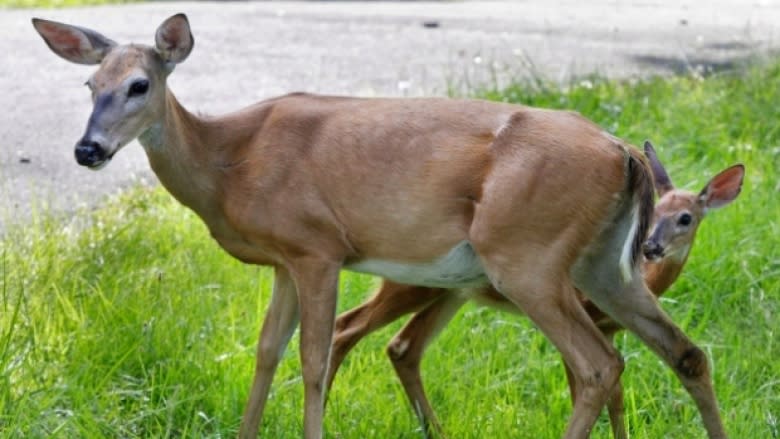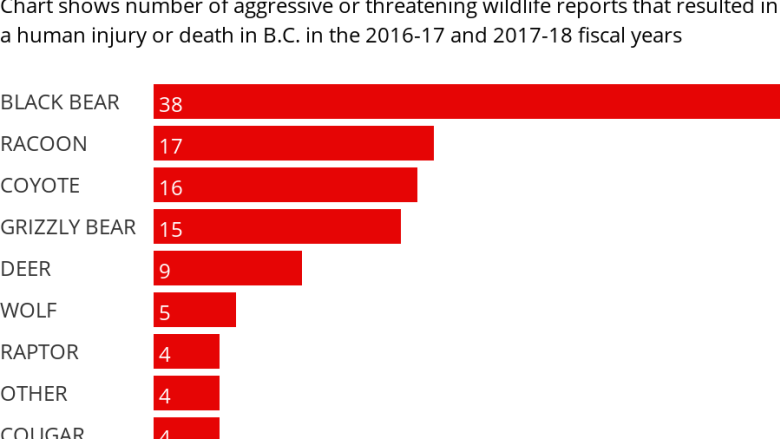Oh deer: The surprising source of many of B.C.'s aggressive wildlife reports
When most people think about wildlife they wouldn't want to encounter on a walk, carnivores such as bears, cougars and wolves spring immediately to mind.
Deer are unlikely to be at the top of that list.
And yet it is deer that are responsible for the second-largest number of calls to conservation officers to report aggressive or threatening wildlife, after black bears, a CBC analysis has revealed.
Our analysis
CBC News obtained four years of data on calls to conservation officers to report threatening wildlife. The data does not include reported incidents in which the animal's behaviour was not considered aggressive.
The first two years, however, only included calls about bears and cougars. Data for fiscal 2016-17 and 2017-18 also included calls about other species such as coyotes and raccoons. CBC therefore limited its analysis to these two most recent years.
Threatened by pets
The reason for the relatively high number of calls involving aggressive deer has less to do with people than their pets, said Mike Badry, a wildlife conflict manager with the B.C. Conservation Officer Service.
These types of calls tend to peak in the spring, when does are protecting new fawns, Badry said. People who live in the Kootenays, the south Okanagan and the Victoria area were most likely to report threatening deer behaviour.
"Does can be very aggressive, particularly toward dogs. So a lot of those incidents of deer that have been displaying aggressive or threatening behaviour, they're displaying that toward dogs when people are out walking with their dogs within a community," he explained.
"And they'll sometimes even attack dogs and most often, the human injury is the person getting in between the deer and the dog to try and protect their pet."
The same is true of raccoons, which account for a small proportion of overall calls about aggressive or threatening wildlife, but a significant number of the ones that resulted in injury to humans.
Many of these injuries occurred in the City of Vancouver.
"Similarly to deer, it's most often raccoons that are denning or have young that are protective of the young and it's almost always in response to a pet, most often a dog, that raccoons will be very defensive and then people will get in between and there will be some mostly minor injuries by raccoons," Badry said.
Most calls about black bears
Black bears were responsible for nearly half the aggressive behaviour reports, which were most common in Prince George, the Tri-Cities/Maple Ridge area and the Sea-to-Sky corridor.
They were also responsible for the highest number of injuries.
To avoid attracting and provoking black bears, keep garbage secure, get rid of fruit trees or bushes or pick fruit as it ripens, hike in groups and give bears a wide berth, Badry said. Don't try to sneak in close for a picture.
While black bears were responsible for the most calls on the periphery of Metro Vancouver, it was coyotes that generated the most calls in more urban municipalities such as Vancouver, Burnaby and Surrey.




